Office plant monitoring
-
end: 0-0-1-0 s=255,c=0,t=17,pt=0,l=5,sg=0,st=fail:1.5.3
send: 0-0-1-0 s=255,c=3,t=6,pt=1,l=1,sg=0,st=fail:1
sensor started, id=0, parent=1, distance=2
send: 0-0-1-0 s=255,c=3,t=11,pt=0,l=21,sg=0,st=fail:Plants moisture w bat
send: 0-0-1-0 s=255,c=3,t=12,pt=0,l=3,sg=0,st=fail:1.2
send: 0-0-1-0 s=0,c=0,t=23,pt=0,l=0,sg=0,st=fail:
find parent -
2016-07-04 14:58:10.793 MySensors: Gateway Ready...
2016-07-04 14:58:10.869 MySensors: Gateway Version: 1.4.2
This domoticz logThis from Arduino ide
sensor started, id 0
send: 0-0-1-0 s=255,c=0,t=17,pt=0,l=5,st=fail:1.4.2
send: 0-0-1-0 s=255,c=3,t=6,pt=1,l=1,st=fail:1
send: 0-0-1-0 s=255,c=3,t=11,pt=0,l=8,st=fail:Humidity
send: 0-0-1-0 s=255,c=3,t=12,pt=0,l=3,st=fail:1.0
send: 0-0-1-0 s=0,c=0,t=7,pt=0,l=0,st=fail:
send: 0-0-1-0 s=1,c=0,t=6,pt=0,l=0,st=fail:
send: 0-0-1-0 s=1,c=1,t=0,pt=7,l=5,st=fail:80.2
send: 0-0-255-255 s=255,c=3,t=7,pt=0,l=0,st=fail:
T: 80.24
send: 0-0-1-0 s=0,c=1,t=1,pt=7,l=5,st=fail:38.7
H: 38.70
send: 0-0-1-0 s=0,c=1,t=1,pt=7,l=5,st=fail:38.5
H: 38.50
send: 0-0-1-0 s=0,c=1,t=1,pt=7,l=5,st=fail:37.8
H: 37.80
send: 0-0-1-0 s=1,c=1,t=0,pt=7,l=5,st=fail:80.1
T: 80.06This is not moisture sketch. I try with different sketches.
Maybe need change nrf? I try.2016-07-04 15:42:12.816 MySensors: Gateway Ready...
2016-07-04 15:42:12.891 MySensors: Gateway Version: 1.5.3 -
Version 1.5 should work if you do it right. It does for me.
In your case the sensor can't seem to get any connection to your gateway.
You should try adding a capacitor to the radio, check your power supply and change the nrf module. These are the reasons for most errors imo (especially the power supply)There are extra Threads/Topics to finding an error with your setup here in the forum. I think this doesn't really belong to this thread anymore.
-
-
Today morning i can say : working. I bought arduinos 3,3v 10 pcs from Aliexpress. Yesterday i change this to 5V pro mini and this sensor get work. I take picture from this Arduino. Maybe 5volts not 3,3. Voltage stabilizer on the arduino is S201 ?
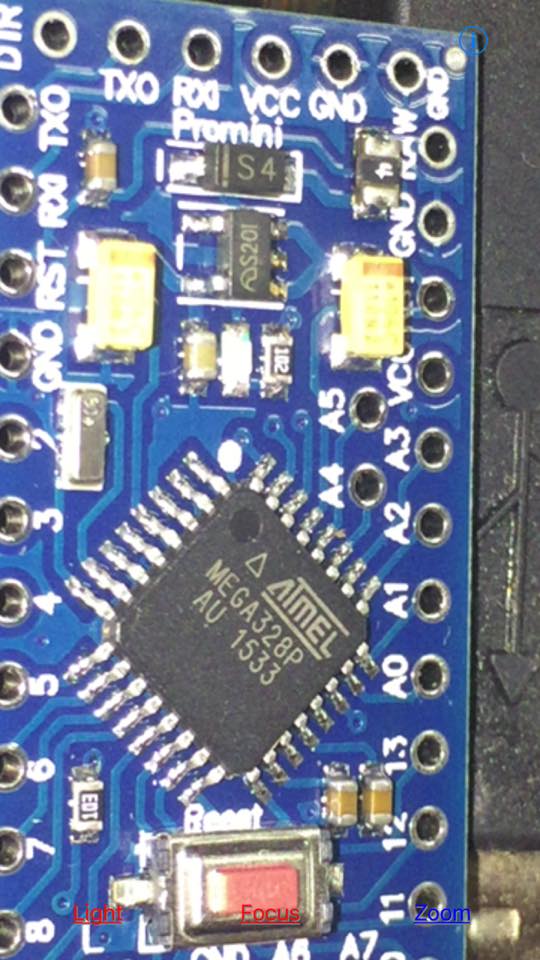
I'll change this china moisture fork with something stainless steel -
@Fat-Fly Hi there! This is Fay from codebender.cc Thank you for using codebender! I just wanted to let you know that the sketch you are using here has been deleted and so it is not available for users to view it. Let me know if you have any question!
Cheers!
Fay -
Thought I would throw this in the pot
Why not change the sensor Probe ?? no credit to me , just was googleing as you do,
Home made sensors I think less prone to corrosion
here's the linkhttp://www.cheapvegetablegardener.com/how-to-make-cheap-soil-moisture-sensor-2/
Had some seeds from very tasty tomatoes last year ,have planted and this year growing like tiffids !!
Getting quite big so have move from kitchen to Greenhouse ASP really
Will try with this type of sensor -
Thought I would throw this in the pot
Why not change the sensor Probe ?? no credit to me , just was googleing as you do,
Home made sensors I think less prone to corrosion
here's the linkhttp://www.cheapvegetablegardener.com/how-to-make-cheap-soil-moisture-sensor-2/
Had some seeds from very tasty tomatoes last year ,have planted and this year growing like tiffids !!
Getting quite big so have move from kitchen to Greenhouse ASP really
Will try with this type of sensor -
I build moisture sensors from stainless wire. If this in pot at a depth of 1 inch domoticz reported 83% of moistre level.Real plant was dry and needed watering. I put moisture level on the soil
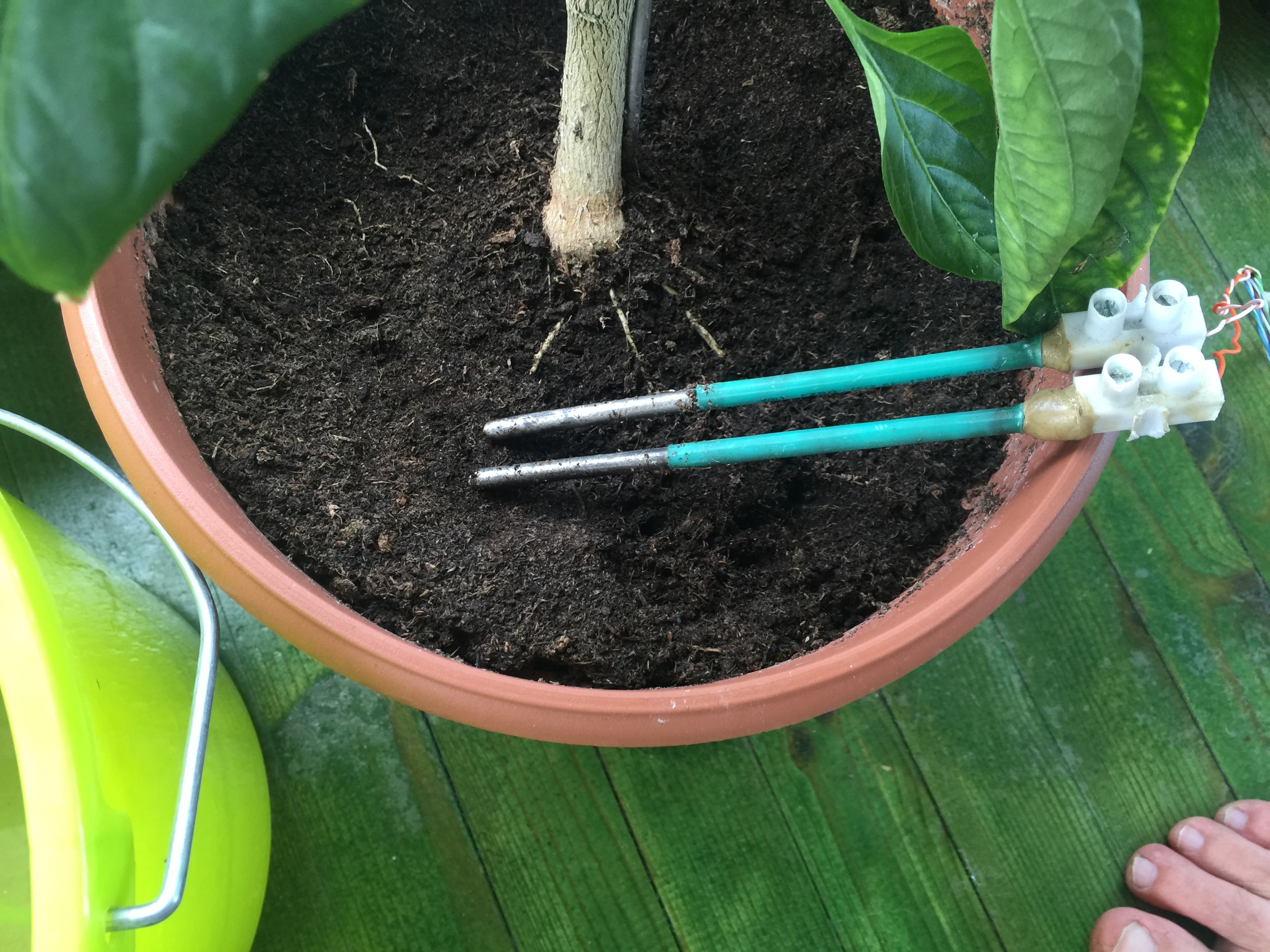
and sensor reported moisture level 43%. I test and put moisture sensor to the soil at depth 1 inch
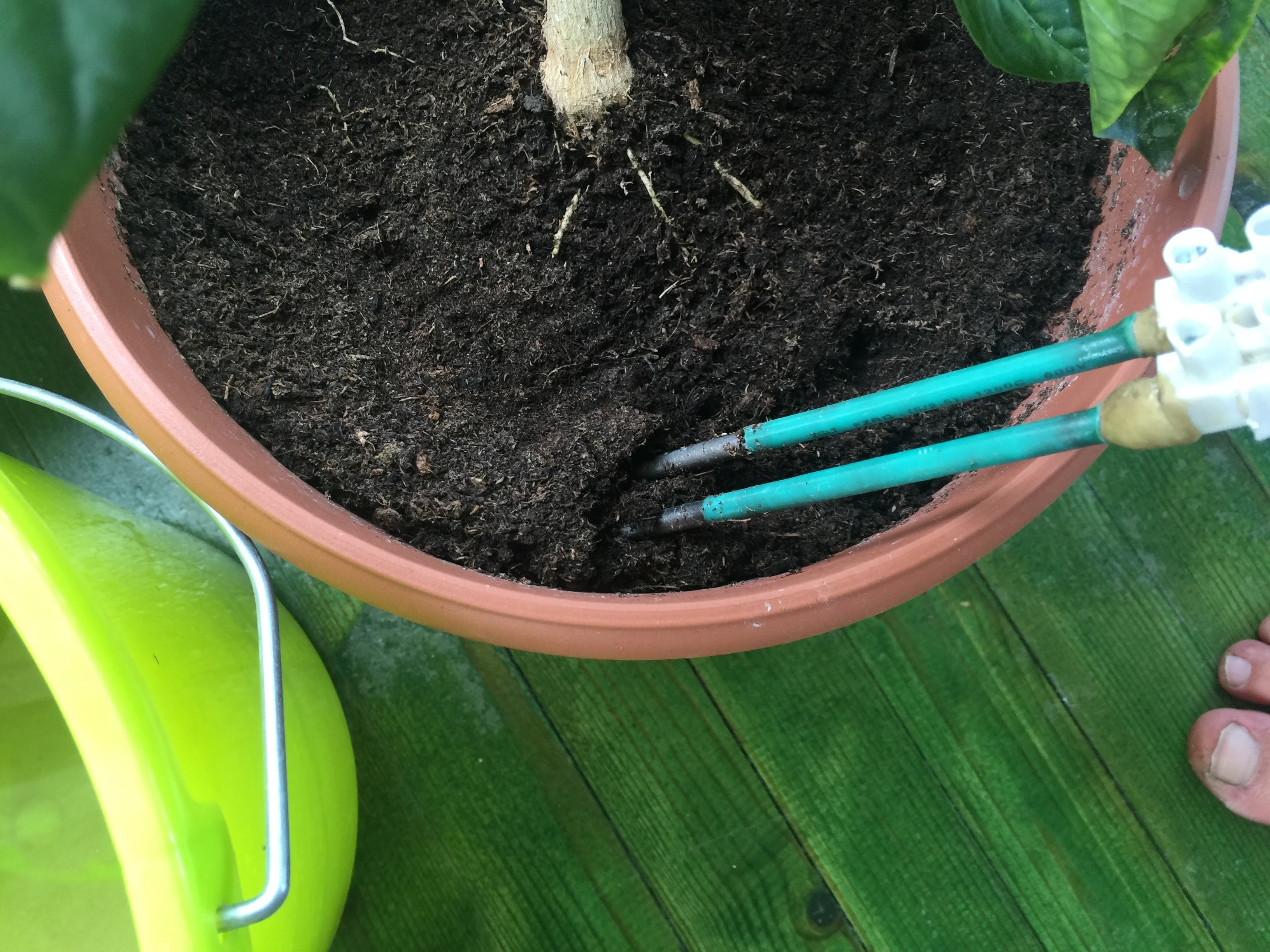
Sensor reported moisture level 96%.
-
Hello,
After several weeks I finally succeed to create a dedicated PCB ! It was started yesterday evening and works fine.
Some pictures:
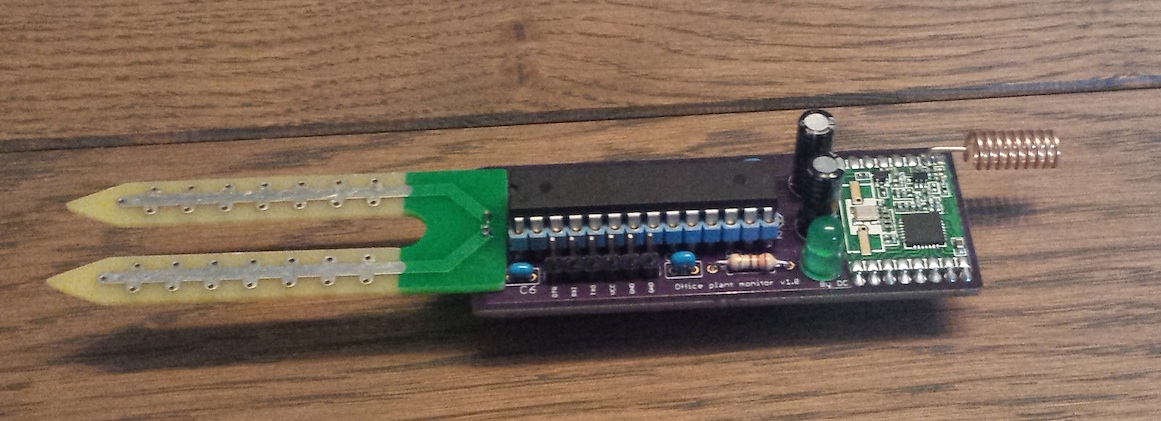

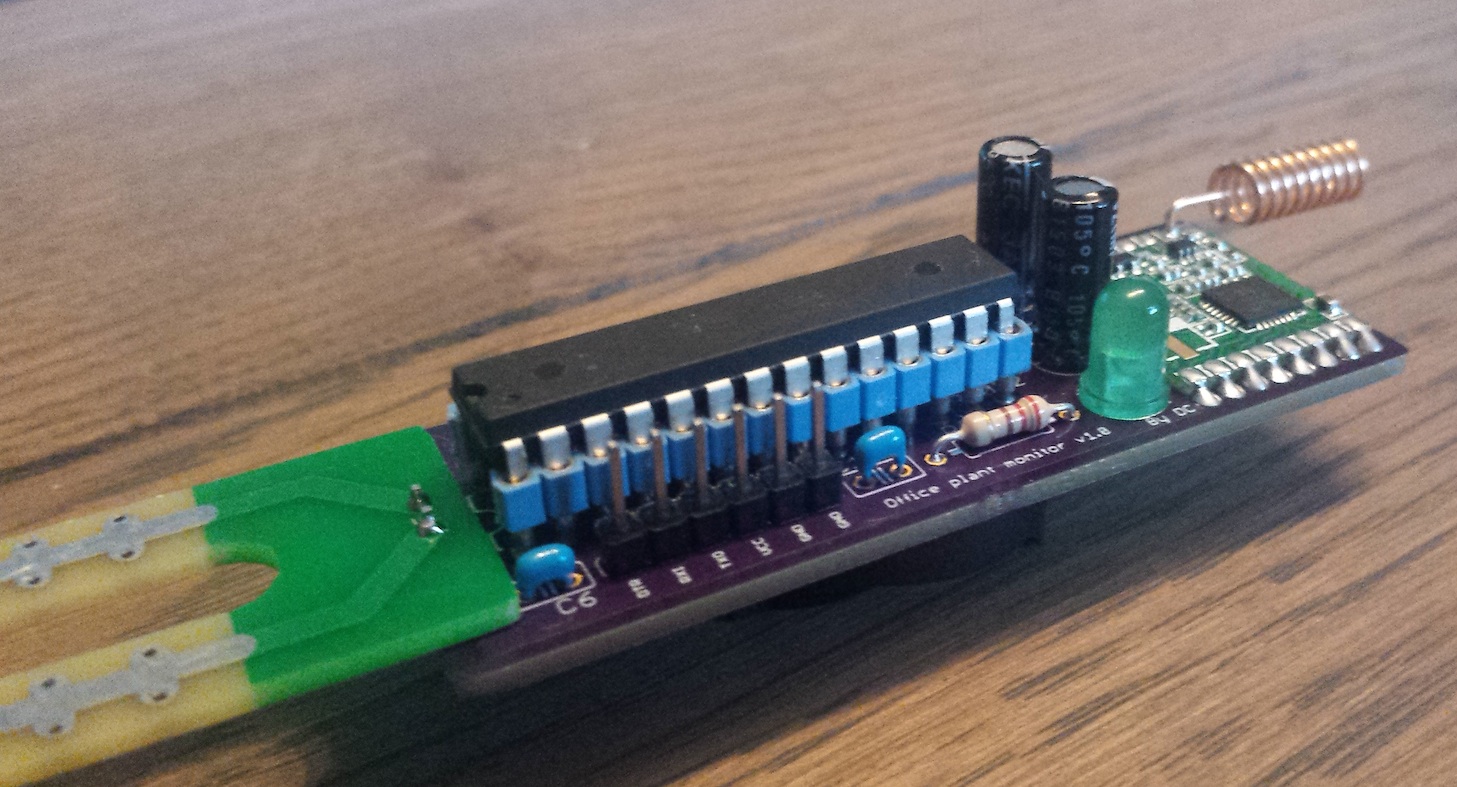
Measure is reported each two hours. So I expect more than two years on a CR2032 (using @GertSanders firmware).
I can off course provide any information as PCB.
Thanks @mfalkvidd for the idea and the code. The project is now WAF ;)
David.
-
Is it possible to purchase it somewhere? :)
